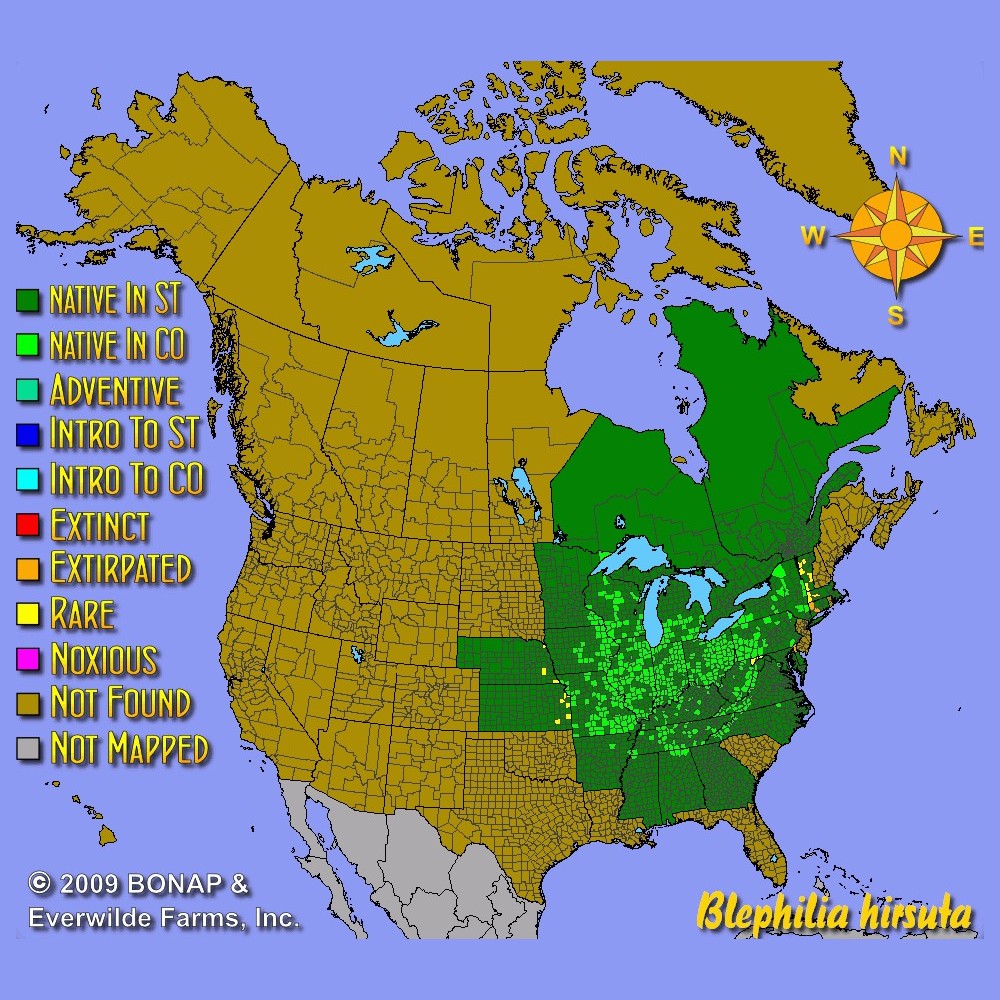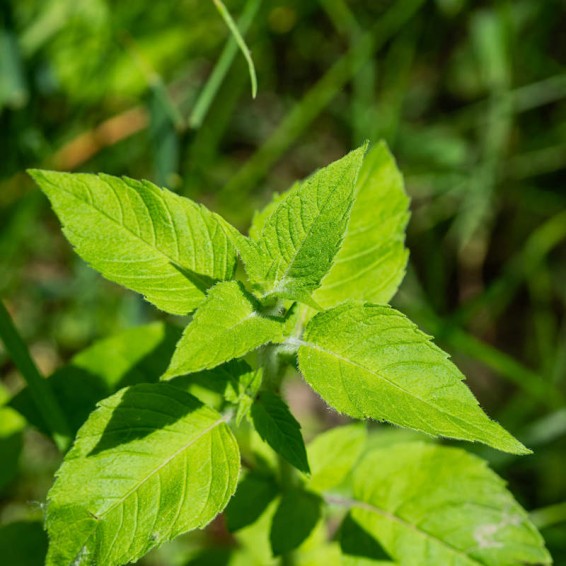Hairy Wood Mint Seeds
- HOW TO GROW
- FAST FACTS
- REVIEWS
HOW TO GROW
Sowing: Direct sow in late fall, planting on the surface of the soil. For spring planting, mix the seed with moist sand and store it in the refrigerator for 60 days before direct sowing.
Growing: This plant prefers medium or well-drained moist soil, though it adapts to rocky, clay, or sandy soil. Provide water for seedlings until they become established. Mature plants may need watering in dry weather. This plant attracts bees and butterflies.
Harvesting: Though edible, the leaves of hairy wood mint do not have the strength and quality of culinary mint. To dry the stalks, cut them at ground level and hang them upside down in a warm, dark place for several weeks.
Seed Saving: After flowering, the spikes will mature and turn brown. Shake the ripe seed heads over a container to remove the seed. Store the seed in a cool, dark place.
FAST FACTS
Common Names: Hairy Pagoda Plant
Latin Name: Blephilia hirsuta
Species Origin: US Native Wildflower
Type: Native Wildflowers
Life Cycle: Perennial
USDA Zones: 3, 4, 5, 6, 7
US Regions: Midwest, Northern, Northeast, Southeast
Seeds per Ounce: 237,000
Stratification: Cold/Wet for 8 Weeks
Germination Ease: Stratify 8 Weeks
Sunlight: Part Sun, Shade
Height: 30 Inches
Color: White
Bloom Season: Blooms Early Summer, Blooms Late Summer, Blooms Early Fall
Uses: Attracts Pollinators, Attracts Honeybees, Attracts Butterflies, Aromatic
Surprised to find these seeds
I have been looking for several varieties or mountain mint, which are native to my area. But they're really hard to find. Everwilde has hard-to-find seeds and rare seeds- really excited to get these them in the ground!
Hairy wood mint seeds
Looking forward to these flowers growing to maturity! To early for a full review, just planted them a few days ago!
DESCRIPTION

HOW TO GROW
Sowing: Direct sow in late fall, planting on the surface of the soil. For spring planting, mix the seed with moist sand and store it in the refrigerator for 60 days before direct sowing.
Growing: This plant prefers medium or well-drained moist soil, though it adapts to rocky, clay, or sandy soil. Provide water for seedlings until they become established. Mature plants may need watering in dry weather. This plant attracts bees and butterflies.
Harvesting: Though edible, the leaves of hairy wood mint do not have the strength and quality of culinary mint. To dry the stalks, cut them at ground level and hang them upside down in a warm, dark place for several weeks.
Seed Saving: After flowering, the spikes will mature and turn brown. Shake the ripe seed heads over a container to remove the seed. Store the seed in a cool, dark place.
FAST FACTS
Common Names: Hairy Pagoda Plant
Latin Name: Blephilia hirsuta
Species Origin: US Native Wildflower
Type: Native Wildflowers
Life Cycle: Perennial
USDA Zones: 3, 4, 5, 6, 7
US Regions: Midwest, Northern, Northeast, Southeast
Seeds per Ounce: 237,000
Stratification: Cold/Wet for 8 Weeks
Germination Ease: Stratify 8 Weeks
Sunlight: Part Sun, Shade
Height: 30 Inches
Color: White
Bloom Season: Blooms Early Summer, Blooms Late Summer, Blooms Early Fall
Uses: Attracts Pollinators, Attracts Honeybees, Attracts Butterflies, Aromatic
Reviews
Review
Surprised to find these seeds
I have been looking for several varieties or mountain mint, which are native to my area. But they're really hard to find. Everwilde has hard-to-find seeds and rare seeds- really excited to get these them in the ground!
Review
Hairy wood mint seeds
Looking forward to these flowers growing to maturity! To early for a full review, just planted them a few days ago!





